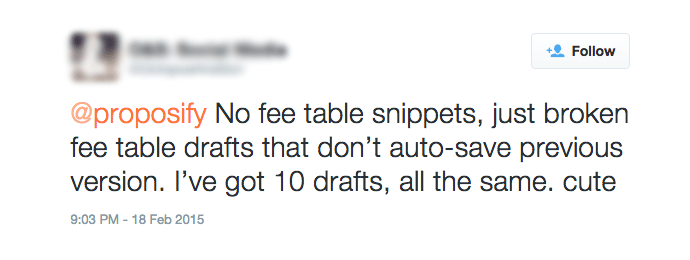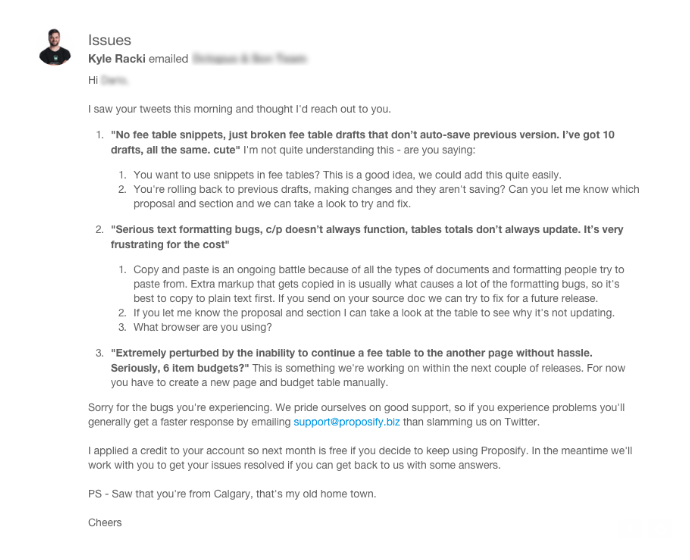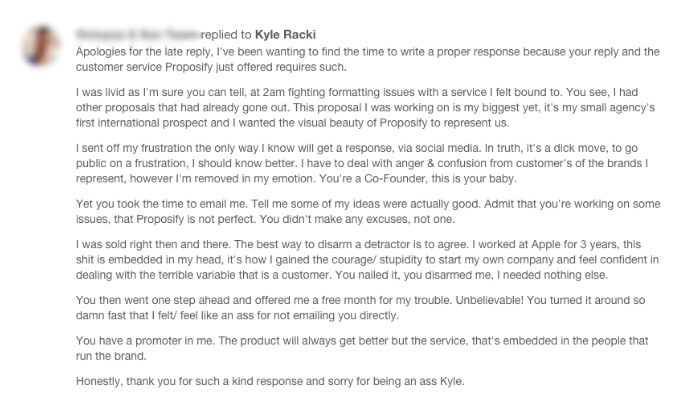Conversations
When customers complain
on social media
Some companies totally slay the social media game — their brand voice is strong with their responses to their customers, they do an excellent job at responding in a timely manner, and their feed is entertaining and informative. If you’ve got a really active social media presence for your company, you should expect that customers are going to reach out to you with both the good, the bad…and the ugly.
One of the quickest ways to get a response from a company is to tweet about it. I know I, sitting in a cramped airport waiting area, have tweeted my share of Angry tweets, and so has this angry customer of Proposify:

Len, from Groove, wrote an excellent commentary on what happened from this tweet that I will paraphrase.
After receiving that first tweet, the Proposify team responded:

While much of this tweet is great, they apologies and offered support for the issue, it’s possible that some would have taken issue with some of the tone in the “publicly shame” portion of the tweet. But, as we said above, companies that have strong brand personalities on Twitter do better with their followers, and it seems that Proposify is no different. After writing that tweet, the team at Proposify also followed up with an email:

This is an amazing email that covers all of the key elements of working with and addressing the issues of an angry customer. Not only that, but it also emphasizes the importance of being able to switch between channels. For complex issues, Twitter’s character limit can be a killer. It’s important to be able to transition away from Twitter into a better venue such as email, phone or video chat. One great way to do this, in the case of Proposify, could have been:
Sorry to hear you’re having trouble. We’d love to help more. Can you reach out at support at proposify.com, or let us know in a DM where is best to reach you?
This puts the ball in the customer’s court again, and they can let you know if they prefer email, phone, video or nothing at all.
Just to close up this section, how about this amazing response to the Proposify team from their original angry customer:
